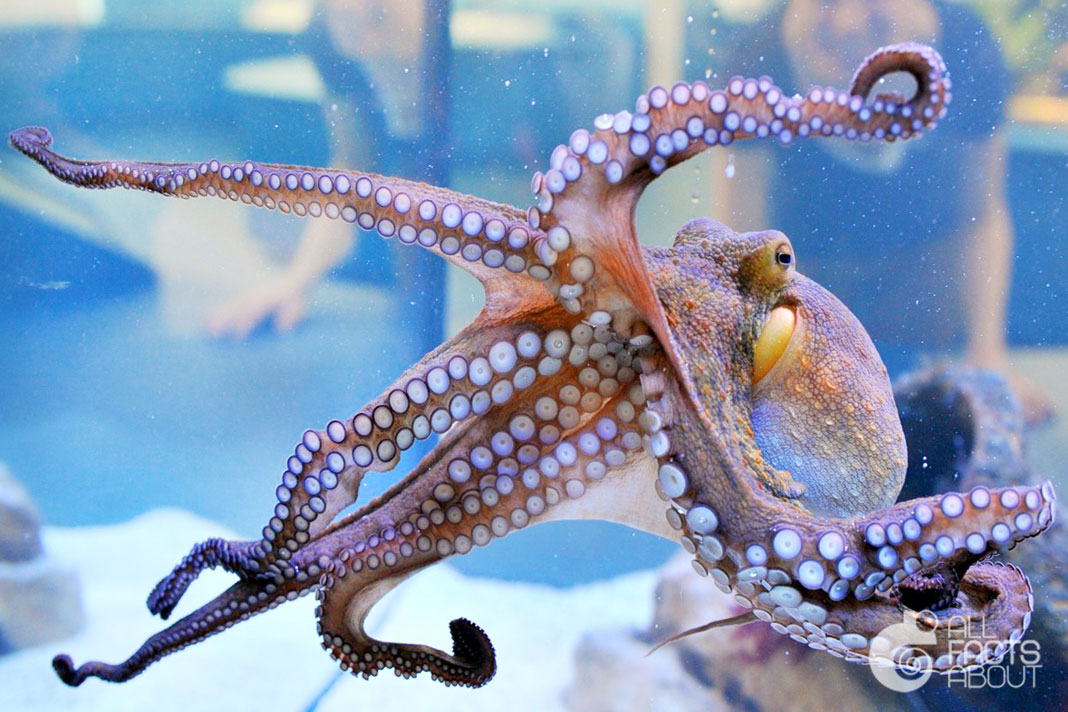

Octopuses are one of the most bizarre creatures on our planet, and according to research by many zoologists, they are the most intelligent of all invertebrates. Octopuses can make appealing pets, they can even be trained for various learning and memory tasks.
1. Octopuses have an unusual circulatory system, they have three hearts, and blue blood. This aquatic animal also has up to nine brains!
2. The giant Pacific octopus (Enteroctopus dofleini) can have over 50,000 babies, but most of them do not survive to adulthood.
3. Many kinds of octopuses are talented mimics. They not only change the color of the skin and textures, masking themselves under the surrounding space but also imitate the behavior of other animals. It can “mimic” at least 15 different species that we know of.
4. Octopuses do not exceed the size of an ant at hatching, but the largest documented octopus was 30 feet across and weighed more than 600 pounds.
5. Large octopuses can even hunt some species of sharks.
6. The blue-ringed octopus is one of the most dangerous animals in the ocean. Despite its small size, carries enough venom to kill 26 adult humans within minutes, it produces a potent neurotoxin called tetrodotoxin.
7. Octopuses are eaten alive in Korea. Sannakji is a dish of traditional Korean cuisine prepared from live octopus seasoned with sesame oil and toasted sesame seeds.
8. If the octopus lost one eye, it also loses the ability to change skin color on that half of the body on which the damaged eye is located.
9. Octopuses are prone to cannibalism, and in the case of starvation can eat even their own limbs.
10. Octopuses have one of the largest size differences between males and females in the animal world. Female octopuses can be forty thousand times larger than males of one species, its called sexual size dimorphism.
11. Unlike most animals, the movements of octopuses do not have any rhythm, but nevertheless their movements look quite elegant and graceful.
12. After a female octopus lays a clutch of eggs, she quits eating and wastes away, by the time the eggs hatch, she dies. Females often kill and eat their mates, if not, they die a few months later, too.